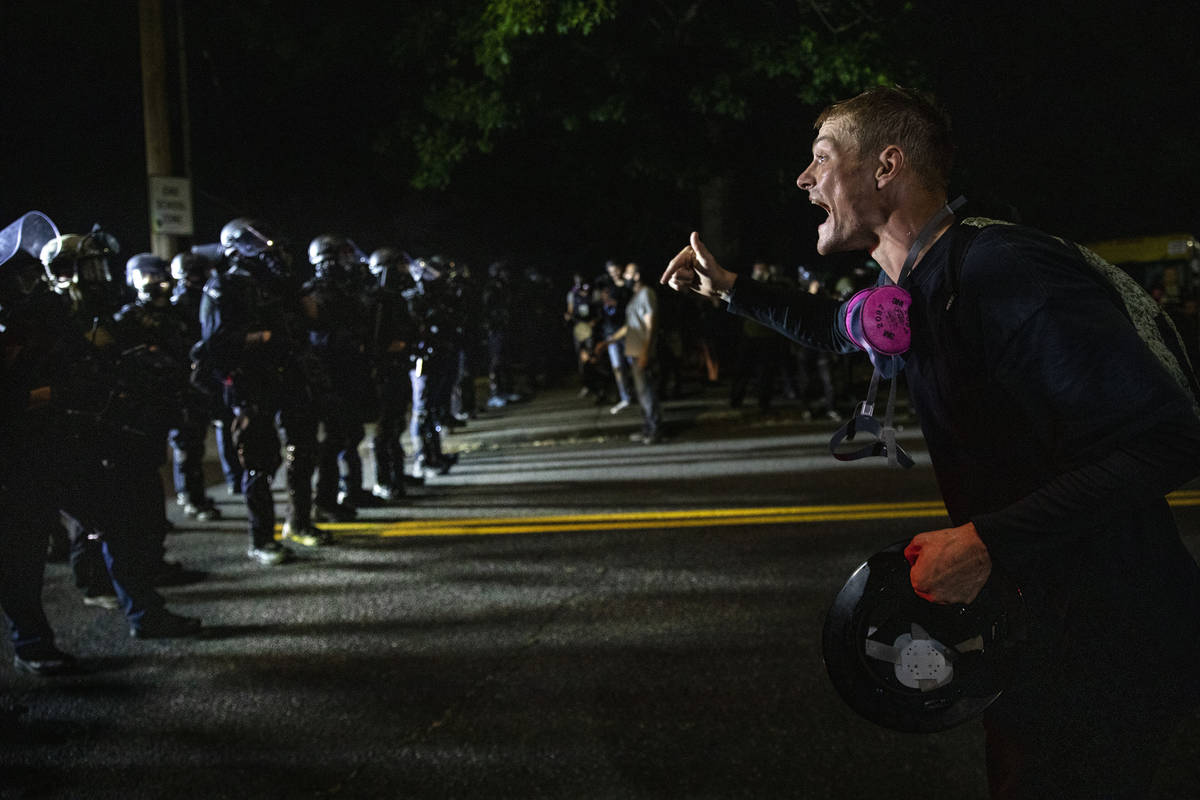MEGAN McARDLE: Rarity does not determine importance

Early in June, at the height of the civil disorder that followed George Floyd’s killing, Fox News host Tucker Carlson delivered an apocalyptic monologue behind this chyron: “Our leaders dither as our cities burn.”
“The nation went up in flames this weekend,” Carlson told viewers. “No one in charge stood up to save America. Our leaders dithered, they cowered, they openly sided with the destroyers. … But you know the truth, because you saw it happen.”
That’s been the theme of the summer for the right; if you follow conservatives on Twitter, Facebook or in the media, you have probably seen videos of buildings burning, protesters harassing people, Molotov cocktails being thrown. You’ve probably heard the twin prophecies, too: that this is the end of civilization and also the reason that President Donald Trump will be re-elected. If you missed them, you can catch the recap in Trump’s convention speech:
“If the Democrat Party wants to stand with anarchists, agitators, rioters, looters and flag burners, that is up to them. But I, as your president, will not be a part of it.”
The left has a rebuttal to all this, of course — these events are a tiny part of an overwhelmingly peaceful movement — and a new report backs that up. The nonprofit Armed Conflict Location and Event Data Project analyzed nearly 8,000 protests connected to the Black Lives Matter movement and found that in 93 percent of them, “demonstrators have not engaged in violence or destructive activity.” Moreover, the study showed, “In many urban areas … violent demonstrations are largely confined to specific blocks, rather than dispersed throughout the city.”
Since nature requires balance, there is also a conservative counter-rebuttal: Isn’t 7 percent rather a lot?
And here we are again, in a debate that seems all too familiar. It starts with some vivid, horrifying events — young, healthy people struck down by COVID-19; store owners assaulted by looters; an unarmed Black man killed by police. These stories go viral precisely because they are rare enough to be shockingly unexpected. But paradoxically, they then make it more likely that other stories like them will go viral, because now they are part of a pattern. Alarm over the pattern leads to political mobilization; the mobilization triggers a countermobilization, in which other people point out that, before we declare a crisis, it’s not enough to know that something bad has happened. You also need to know how often it happens.
Upon closer examination, it often turns out: Not very.
Most people who die of COVID-19 are elderly, and while it’s possible that younger people may be more vulnerable to debilitating long-term complications, we don’t yet have solid data indicating how frequently that occurs. Most BLM protests have been orderly from start to finish. Most encounters with the police do not end with the police killing an unarmed Black man; even if we look only at fatal police shootings, we find that only 2 percent of those tallied by The Washington Post between 2015 and 2019 fit that description.
We have, in effect, a battle between Team Numerator (the shocking but rare) and Team Denominator (the mundane and commonplace), and Team Denominator can be quick to declare itself the victor and depart the field.
Yet this is no more sensible than declaring that a handful of viral videos are “the real truth” — about policing, about protests, about anything.
COVID-19 has already killed more than 186,000 Americans; it may well kill or debilitate many more. Most protests and protesters may be peaceful, and the whole nation may not have gone “up in flames,” but Minneapolis and Kenosha, Wisconsin, still burned. Most police encounters do not end in an unjustified killing, but some do, and one George Floyd, or Eric Garner, or Tamir Rice is too many.
Just because something happens rarely doesn’t mean it’s unimportant. In fact, “overreacting” to rare events can be rational if it keeps an incipient pandemic from spreading out of control — or if it sends a signal to would-be looters or abusive cops that a furious society will descend on them should they violate our basic moral precepts. In those cases, it’s not just understandable to worry about the infrequent and intolerable; it’s downright smart.
That truism should be easy for everyone to recognize, given how often Team Denominator and Team Numerator switch sides. If we can understand why “Most Black men don’t get shot by police” is a callous, stupid reply to “Black Lives Matter,” and “Most COVID-19 patients live” is a glib nonresponse to concerns about those who don’t, then we should also be able to grasp why “Most of Minneapolis wasn’t burned down” won’t satisfy concerns about what happened in American cities this summer. Some things are so abnormal that we can only be determined to make them rarer still.
Follow Megan McArdle on Twitter, @asymmetricinfo.